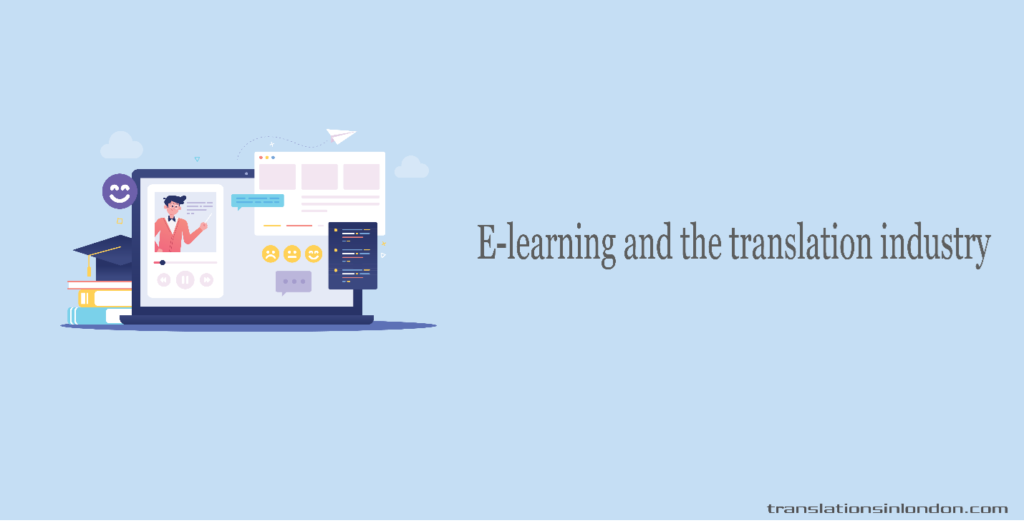
2020 pushed e-learning to the mainstage.
As restrictions of movements and lockdowns became the order of the day due to the pandemic, everyday life, which included education and learning, was affected.
In a bid to navigate the times, e-learning became the natural alternative. So more individuals and institutions began to adopt virtual platforms and digital resources to facilitate the learning process.
2021 is here, and vaccines roll-out are occurring simultaneously across the globe. As the world gradually returns to normal, e-learning looks like it is here to stay due to its numerous benefits.
But organizations, in the process of passing across learning materials, must account for the diversity of their audience, which is where LSP’s and the translation industry come in.
This post looks at the current trend of e-learning and how translation services are required to enhance the learning experience.
Overview of the e-learning sector
E-learning may be a buzzword today, but it has definitely been around for a few decades. Its root goes back to the 1980s from the advent of Macintosh personal computers.
As internet penetration increased, educational institutions and businesses gradually began to use this learning format to reach a wider audience and break geographical barriers.
The e-learning segment had an upward growth trajectory even before the pandemic. The Docebo 2017 survey estimated the global market size for e-learning to be $165 Billion in 2015 and projected growth to $240 Billion by 2023.
But the coming of the global pandemic took it to another level.
Recent data estimates the global market size to be $375 Billion by 2026 with a CAGR of 32.1%.
While students and workers stayed at home to maintain social distance, organizations sought creative ways to disseminate knowledge. Online learning platforms like; Udemy and Coursera began witnessing a surge in users, and at the same time, the use of learning management systems is also on the rise.
What is e-learning?
Before we go any further, let us actually clear the air on what exactly e-learning is.
E-learning is exactly what its name is; learning electronically. Which can either be via the internet, video, or audio platforms.
It comes in various forms. E-learning may be fixed or adaptive, synchronous, asynchronous, linear, interactive, and many more.
There is no fixed medium for transmitting informational content. It could be through video conferencing, pre-recorded content, an online chat system, and whatnot.
At the heart of it all, e-learning relies heavily on the internet to convey most of the information between both parties involved.
Adopting a virtual form of learning has many perks. We can start with cost savings in its deployment. One stands to save up to 70% in costs. By deploying e-learning as against the convention learning system. Besides the financial gain, e-learning has better knowledge retention, is scalable, has a broader reach, and is easily personalized to cater to the unique needs of its audience.
How does translation affect e-learning?
Where does e-learning intersect with translation? What is the relationship between these two?
Well, the answer lies in personalization.
It is safe to assume that due to globalization, the beneficiaries of some of these learning programs may have different cultural backgrounds.
Since people learn faster in languages they are more familiar with, it makes a lot of sense for learning materials to be in the target audience’s native language.
This is where translation and localization services come into the fray. Translation enhances learning by helping overcome language barriers. So, translation agencies have to work alongside e-learning service providers to deliver a seamless multilingual learning experience for participants.
Translation agencies are tasked with the translation and localization of media content (video subtitles or voice-overs), the user interface of e-learning software, help files, graphical user materials, course documents, and many more.
At the core, Translated materials need to be apparent to all. It also needs to be accurate to ensure that no information is lost during translation and that all learning objectives are fulfilled.
Conclusion
The pandemic may have laid the foundation for the transition away from the traditional classroom system, with e-learning becoming the future of learning.
Since learning and education are borderless, e-learning service providers must cater to diversity and be inclusive while disseminating knowledge. Therefore, translation and localization services have a vital role to play.
At the same time, translation services need to be capable of handling the needs of e-learning. Translated materials need to be clear and concise while staying true to the desired learning objectives.
TranslationsinLondon delivers translation and localization of e-learning services for individuals and organizations. With our dedicated specialists and professional linguists who have vast experience across fields, we guarantee content that is of the highest quality. Give us a call today or send a message to get started.